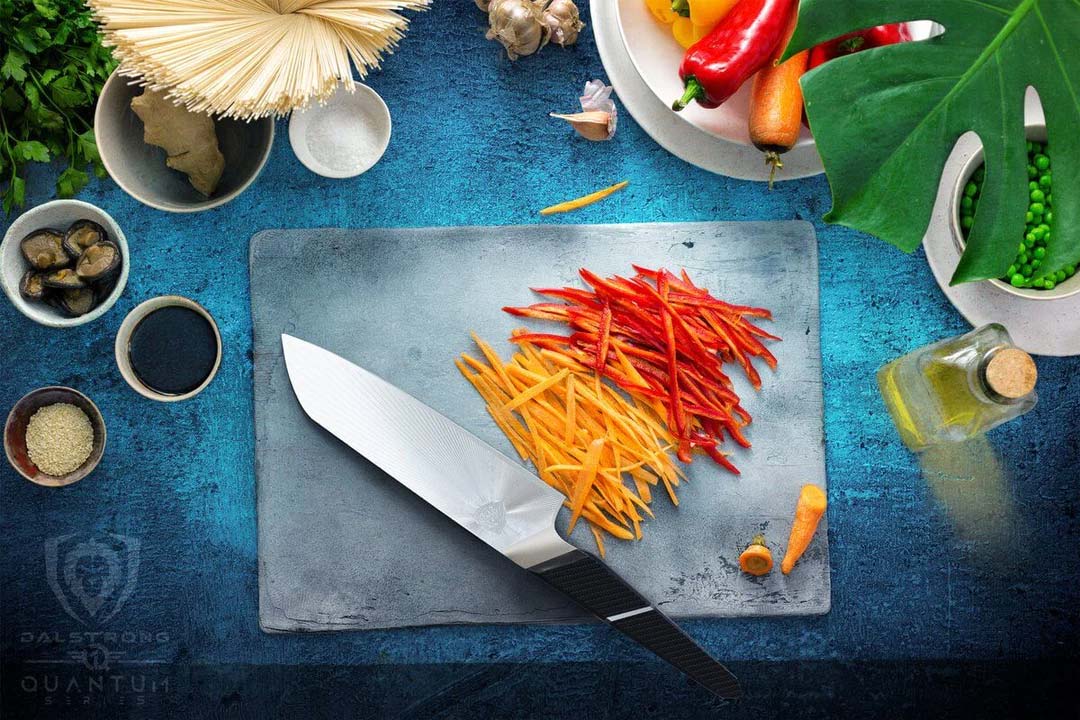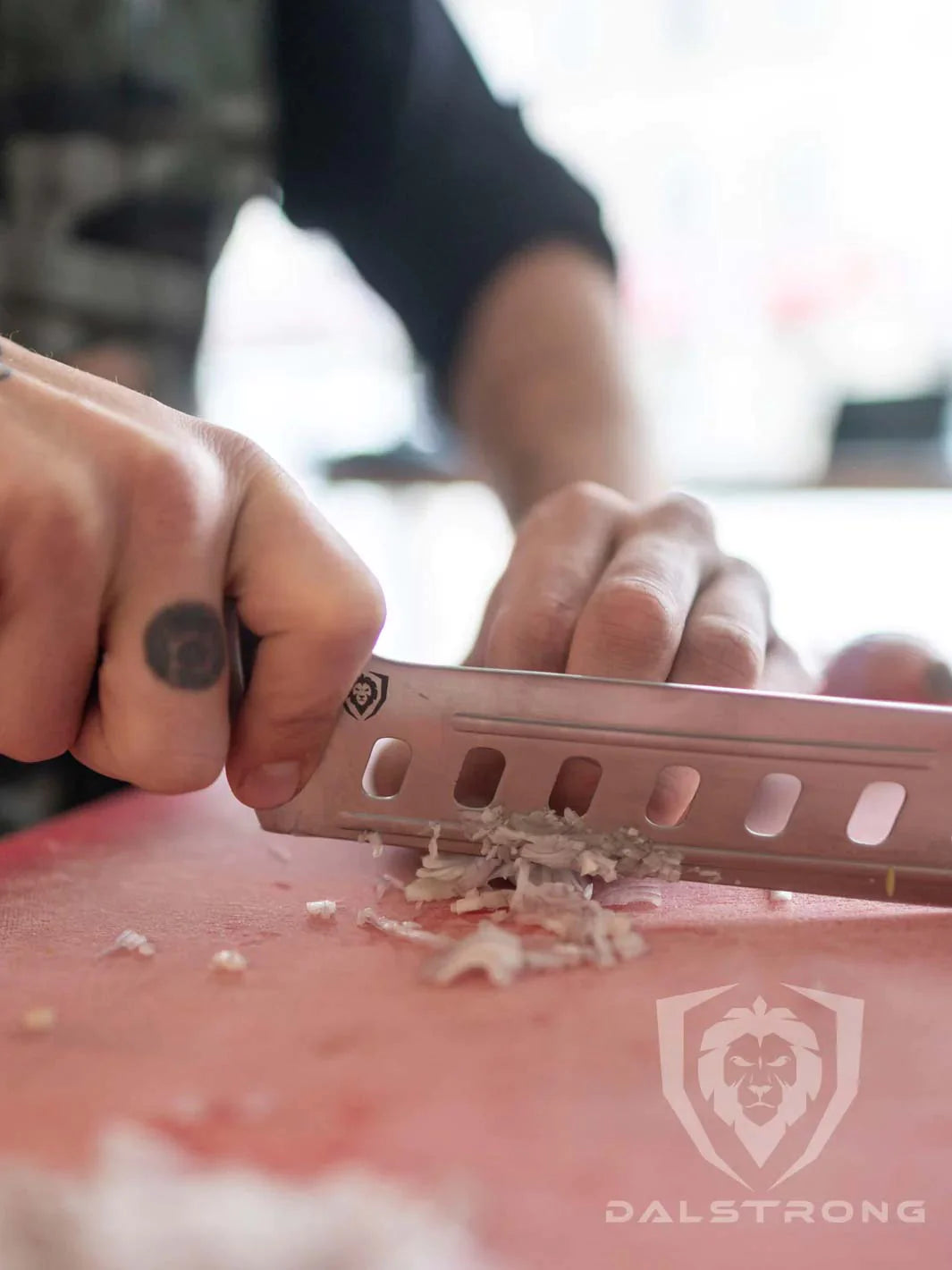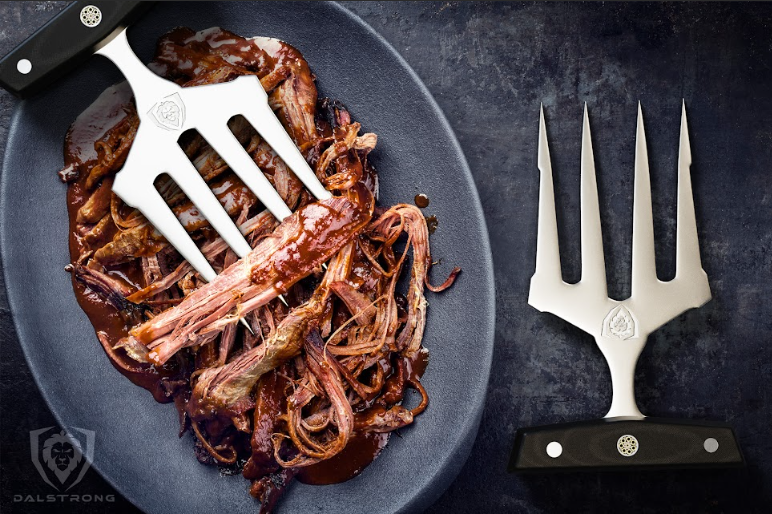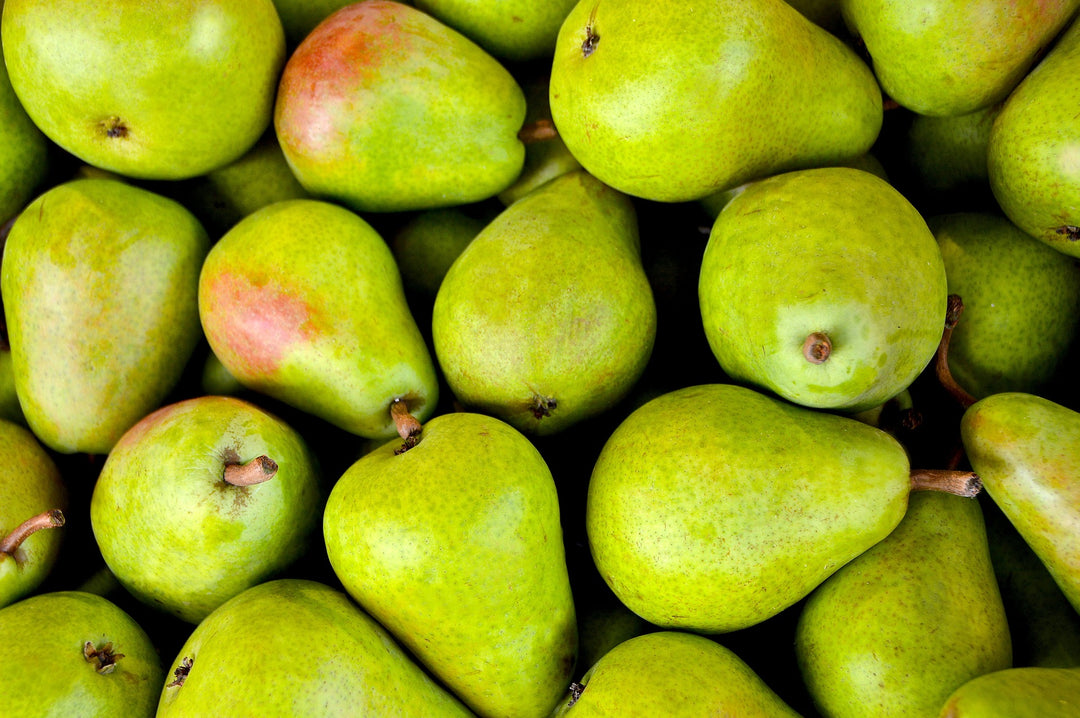Everything You Need to Know About the Rondelle Cut
 Guga Edition Slicing & Carving Knife 12"
Guga Edition Slicing & Carving Knife 12"
A rondelle cut is a simple slicing technique that produces round, uniform discs from cylindrical vegetables or fruits, like cucumbers or carrots.
1. History And Origins Of The Rondelle Cut
 Valhalla Series Slicing & Carving Knife 12"
Valhalla Series Slicing & Carving Knife 12"
Rondelle may sound like the name of a character in a swanky French novel, but it’s really just a fancy word for “round slices.” In fact, it comes from the French word for “round,” which makes perfect sense when you think about it. This cut is all about creating those beautiful, symmetrical circles from vegetables and fruits. Picture a cucumber or carrot sliced into perfect little discs — that’s a rondelle. And it’s not nearly as difficult as it sounds.
A French origin with a touch of elegance
The rondelle cut has humble roots, though its country of origin is undeniably French (because, of course, the French made even something as simple as slicing round things sound elegant). Historically, the French culinary world is where many classic cuts, like brunoise, julienne, and batonnet, were codified, so it’s no surprise that the rondelle cut made its way into the lineup. Despite the fancy name, the rondelle is a cut for everyone — from professional chefs to home cooks looking to make their vegetables and fruits more visually appealing.
Now, here’s the thing: while it may seem like one of those beginner cutting techniques (and it is), there’s a little finesse to getting those perfectly thin slices. A good chef knife or santoku knife will glide through your veggies like butter, and with some practice, you’ll be slicing perfect rondelles that look like they belong in a magazine spread. These slices can elevate your presentation, making even a simple salad or sautéed dish shine.
Parallels in art and craft
Interestingly, the rondelle cut has a sort of modern counterpart in the world of art and jewelry — specifically in Czech glass beads. These small, round beads are made using similar principles of precision and symmetry. Crafting rondelle-shaped beads in the jewelry world is a bit like mastering the batonnet cut or julienne in the kitchen: delicate, refined, and requiring just the right touch. (Although you’ll need a whole different set of tools — no disc spacer needed for cutting veggies, thank goodness.)
Why the rondelle cut works for everyone
Whether you're preparing a gourmet dish or just trying to make your cucumber slices look less like they were hacked at with a hatchet, the rondelle cut is your go-to. It’s straightforward, effective, and as versatile as any cut can be.
Once you’ve mastered it, you can move on to more advanced cooking methods and fancier techniques like the fine julienne cut — but let’s not get ahead of ourselves. Rondelle slices are like the culinary equivalent of hitting the “beginner” level but with the satisfaction of looking way more skilled than you actually are.
Read about the basic techniques for professional culinary arts knife cuts, here.
2. Step-by-Step Guide To Performing A Rondelle Cut
 Valhalla Series Slicing & Carving Knife 12"
Valhalla Series Slicing & Carving Knife 12"
Ready to master the rondelle? Here's your easy, step-by-step guide to performing a rondelle cut:
- Pick your veggie (or fruit): The rondelle cut works best with long, cylindrical vegetables like carrots, zucchinis, cucumbers, or even sausages (why not?). Basically, if it can roll, you can rondelle.
- Grab a chef knife (or a santoku knife, if you’re feeling fancy): Your kitchen knives matter here. A good, sharp chef knife will glide through the veggies, giving you smooth, even slices. If you’re feeling particular, use a santoku knife for extra precision. That thin blade is perfect for getting those even, controlled cuts.
- Hold it steady: Place the veggie on your cutting board and stabilize it with your non-dominant hand using the claw position. Keep those fingertips tucked under like they owe you money -- safety first, people!
- Start slicing: Make even, smooth slices through the vegetable, aiming for uniform thickness. Don’t forget to use the whole length of your blade for the best results. The slices should be thin -- just not “so thin you’re practically julienning” thin (we’ll save that for later).
- Admire your handiwork: Look at those beautiful little round slices! Whether they’re bound for a salad, stir-fry, or fancy garnish, you’ve just performed a perfect rondelle cut. Victory tastes like perfectly even cucumbers.
3. Tools Needed For Perfect Rondelle Slices
Valhalla Series Slicing & Carving Knife 12"
You wouldn’t attempt a rondelle cut with a butter knife, right? To nail this cut (and others, like cube cuts), you’ll need the right tools. Here’s what to stock in your knife drawer:
Chef knife
A quality chef knife -- 8 inches in length, preferably -- is your go-to tool for rondelle cuts.
Santoku knife
If you want to get precise, a santoku knife is ideal for those thinner slices, especially when making fine cuts like a fine julienne or brunoise.
Paring knife
For smaller, delicate fruits and veggies, a paring knife can be a lifesaver. It’s also great for control when doing rondelles on more petite ingredients.
Cutting boards
A sturdy cutting board is a must. Ideally, use wood or plastic, and make sure it’s large enough to give you plenty of slicing room. Avoid those tiny boards that turn into a slip-and-slide as soon as you add moisture. (Trust me, you don’t want a cucumber rolling off into the abyss.)
4. Safety Tips For Using A Knife With Rondelle Cuts
 Valhalla Series Slicing & Carving Knife 12"
Valhalla Series Slicing & Carving Knife 12"
Let’s be honest -- knife skills can make you feel like a pro chef, but no one wants to end their rondelle session with a trip to the ER. So, before you start slicing those perfect thin slices of cucumber or zucchini, here’s how to stay on the safe side.
Use the Claw Grip: The claw position might sound like an obscure martial arts move, but it’s really your best friend in the kitchen. Tuck your fingers under, keeping your knuckles against the side of the knife. This way, even if you lose focus for a second (or your knife slips), the worst that happens is a little scrape, not an impromptu amputation. Think of your hand as a disc spacer -- keeping everything in place while the blade does its work.
Keep Your Knife Sharp: You’d think a dull knife would be safer, right? Not even close. A dull blade requires more pressure, which increases the chances of it slipping. A sharp knife glides through those veggies like butter, making each cut rondelle smooth, precise, and -- most importantly -- safe. You’ll also end up with slices worthy of a Raven’s Journey photoshoot, if we’re talking veggie aesthetics.
Take Your Time: Sure, you could try to fly through your prep like you’re on a reality cooking show, but let’s slow it down a bit. Even when you're getting into a rhythm, it’s better to focus on even, controlled cuts. Trust me, no one’s giving out awards for the fastest rondelle cut at home (and if they are, I want in). So breathe, slice, and keep your fingers intact.
5. Dalstrong Knives You Need
1. Shogun Series Chef's Knife 8"
This awesome knife has got 66 layers of Damascus steel wrapped around a seriously strong Japanese Super Steel core. The blade is long and wide, so whether you’re rocking or pushing it through veggies, it feels smooth and easy. Plus, the hammered finish keeps things from sticking to the blade, which is a small win you’ll appreciate when you’re in the middle of prep.
PROS:
- The blade is super sharp with a fine 8-12° edge, so it slices through everything like butter.
- The hammered finish keeps food from sticking, making your chopping feel quicker and cleaner.
- Full tang and triple rivets make this knife feel solid and well-balanced in your hand.
- Comes with a solid sheath that actually fits, so you can store it safely without worrying about damaging the blade.
CONS:
- Not everyone is a fan of the hammered finish or the blade pattern.
- It’s a bit on the heavier side, which could feel bulky if you’re used to lighter knives.
2. The Scorpion Series Chef's Knife 8"
If you’re looking for something that feels a little more nimble in your hand, the Scorpion 8” Chef Knife has you covered. Built for speed and precision, it moves easily through proteins and vegetables, and the narrow tip is perfect for those finer, more detailed cuts.
PROS:
- The narrow tip is perfect for detail work like scoring, but it’s just as great for slicing up perfect rondelle cuts on your veggies.
- The knife has a sleek, lightweight feel compared to the heavier Shogun Series, making it ideal for fast, agile cutting.
- The 69-layer Damascus steel and full tang build ensure strength, even though it’s single-riveted for a more streamlined design.
- Comes with a genuine leather sheath.
CONS:
- It’s toward the top end of the price range, so you’re paying a bit more for the finer touches.
- While the lightweight design is great for speed, some might prefer the solid feel of heavier knives.
3. Spartan Ghost Series Santoku Knife 7"
If you're in the market for a knife that feels like it could slice through anything (and look downright awesome doing it), the Spartan Ghost Series Santoku Knife is a Plus the handle is blood-red resin with stabilized wood and brass accents. Looks and feels amazing.
PROS:
- The S35VN powdered steel and Dalstrong’s LionArmor coating make this knife ridiculously tough and resistant to corrosion.
- Lightweight and ultra-thin design makes precision cuts, like rondelle or fine julienne, almost effortless.
- The D-shaped handle provides an excellent non-slip grip.
- Comes with a premium handmade leather sheath as well.
CONS:
- The ultra-thin blade is great for precision, but if you’re used to heavier knives like the Shogun, it might take some adjusting to the lighter feel.
- Extremely sharp, so careful when washing it!
4. Gladiator Series Chef's Knife 8"
If you’re looking for a reliable, all-around kitchen knife that can handle pretty much anything you throw at it, the Gladiator Series Chef's Knife is your guy. It’s made from tough German steel, so it can stand up to heavy use, and the tall blade gives you plenty of room for your knuckles when you’re chopping fast.
PROS:
- The tall blade is perfect for rondelle cuts and gives you plenty of knuckle clearance for quick, safe chopping.
- The steel is softer than the Shogun or Spartan, so it’s easier to sharpen when it needs it, which is great if you’re not looking for super high maintenance.
- The handle feels sturdy and comfortable, especially during longer prep sessions where you’re doing a lot of cutting.
- Its accessible price point makes it a great option for home cooks who want a solid knife without spending a ton.
CONS:
- The softer steel means you’ll probably need to sharpen it a little more often compared to the Spartan or Shogun.
- It’s bulkier than some of the other knives, so it might not feel as agile for finer tasks like slicing super thin or detailed work.
5. Shadow Black Series Santoku Knife 7"
The Shadow Black Santoku is is smaller and lighter than your standard chef’s knife, but still packs plenty of punch. That black titanium-nitride coating helps with corrosion resistance and keeps food from sticking to the blade, which is always a win. The knife is really versatile, great for all your slicing, dicing, and mincing needs.
PROS:
- The smaller, lighter design makes it super easy to handle for rondelle cuts and more detailed work compared to bulkier knives like the Gladiator.
- The non-stick coating is surprisingly helpful when you’re prepping, especially with sticky ingredients.
- Despite being lightweight, it still feels solid in your hand thanks to the full tang, giving you good control.
- It's one of the coolest-looking knives you'll ever find.
CONS:
- The black coating can make sharpening feel a bit tricky at first -- you might be a little nervous about messing it up, but you’ll get used to it.
- If you’ve got more traditional kitchen gear, the modern black-on-black look might stand out a bit too much or clash with the rest of your setup.
6. Frequently Asked Question
What size is a rondelle cut?
Typically, rondelle slices are about 1/8 to 1/4 inch thick. But as with all things culinary, it depends on what you’re cooking. You might go thinner for garnishes or thicker for heartier dishes, like a rustic stew. If you’re feeling extra fancy, you can cut thinner and call it a fine julienne.
What is an example of rondelle?
An example of a rondelle is a simple, circular slice from a cylindrical vegetable or fruit. Think of a cucumber or carrot cut into even, round pieces. These slices are commonly used in salads, garnishes, or even as toppings for various dishes. You can also create rondelles from zucchinis, sausages, or any other ingredients that can be sliced into thin, uniform discs.
What are the 10 basic knife cuts?
The ten basic knife cuts are: Rondelle (of course), julienne, fine julienne, brunoise, chiffonade, batonnet, paysanne, dice (small, medium, large), rough chop, and diagonal cut (a fancy cousin of the rondelle).






















































































































































































































































